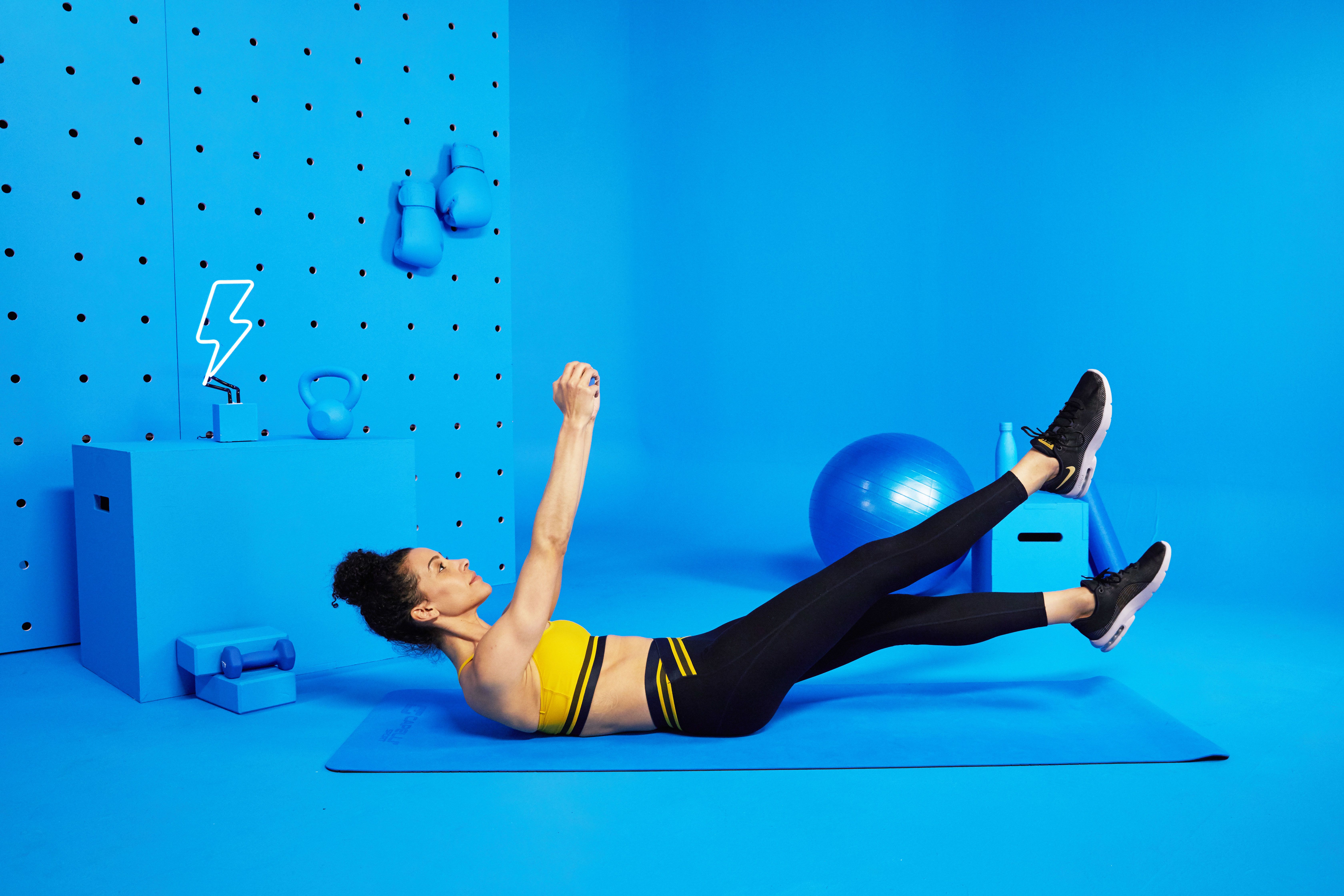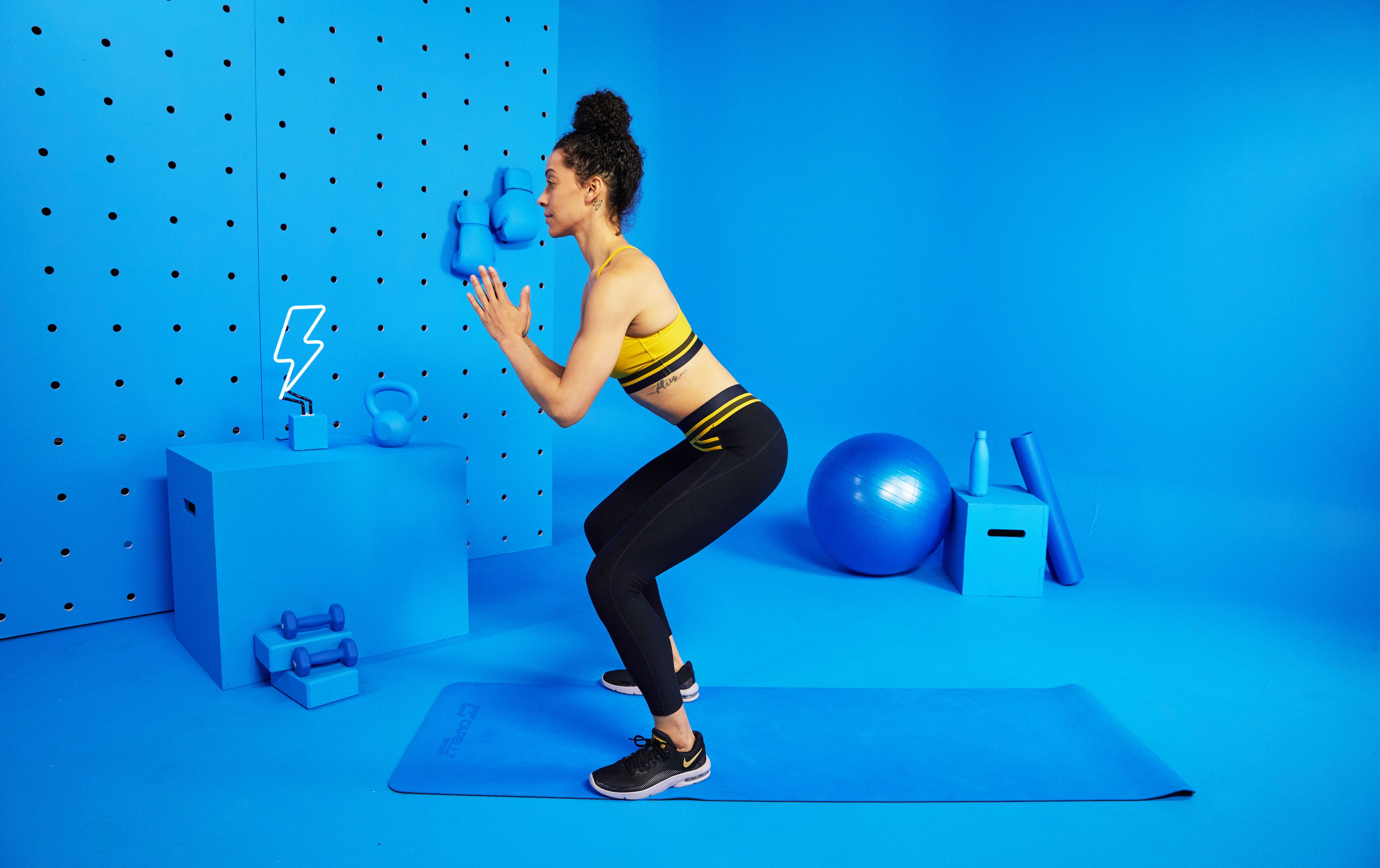Shoulder Taps Will Give You The Seriously Toned Abs You've Been After
Shoulder taps might seem like a second cousin of the plank, but they’re actually an incredibly challenging abs-and-arm workout in their own right. As a NASM-cpt and Nike Master Trainer, I’m going to teach you everything you need to know about this move—including its benefits, form tips, and variations.
 Jewelyn Butron
Jewelyn Butron
Unlike a traditional plank, which is an isometric exercise, shoulder taps are an active move that require you to use your palms to alternately touch the top of your opposite arm while holding your body still. It may sound simple, but just wait until you try it. You’ll need an engaged core and some serious arm strength to pull off this exercise.
There are also tons of variations of shoulder taps you can do to increase or decrease the intensity of the exercise. When you want a more challenging version, for example, try performing them from a high-plank position. If you need to regress a bit (which is totally okay!), stay on your knees and rest your hands on a bench. Whatever way you choose, you’ll reap the rewards of adding this exercise to your fitness routine.
The Benefits Of Shoulder Taps
Shoulder taps are one of the most functional movements you can do because they are an anti-rotation exercise (i.e. a drill that requires you to keep your hips and shoulders squared).
Shoulder taps target plenty of muscles,especially your transverse abdominals (deep core muscles that wrap around your midsection like a corset) and obliques. Doing them regularly will help you strengthen your core and gain more stability in your trunk at the same time.


Plus, as an added bonus, you’ll build arm and shoulder strength because you’re essentially holding your bodyweight up with one arm at a time.
How To Do Shoulder Taps
Doing a shoulder tap the right way requires you to engage several muscles simultaneously—your abs, back, chest, and arms. Here’s a step-by-step guide to doing shoulder taps like a pro:
Form tips: Be mindful to keep your shoulder blades rolled down your back and not creeping up toward your ears. This will keep the work in your core. To help your hips stay level, imagine you’re balancing a glass of water on your lower back and you don’t want to spill it.
Reps/sets for best results: Start with 3 sets of 6–10 reps on each side. Alternate with another core exercise that doesn’t bear weight on your shoulders like flutter kicks, or give yourself at least 15 seconds of rest in between sets.
Variations On Shoulder Taps
- Shoulder tap with hold: In the same set up position, when you bring the hand to your shoulder, you can hold for 3–5 seconds, making it more challenging because your core has to work harder not to rotate.
- High-plank shoulder taps: Rather than doing this move on your knees, begin with your legs fully extended, feet wider than your hips for more stability. You can also narrow your stance to make it more challenging.
- Shoulder taps with leg lifts: From a high-plank position with your feet wider than your hips, tap your left shoulder with your right hand while lifting your left leg at the same time.Then repeat on the other side.
- Elevated shoulder taps: You can make the move a little easier by decreasing the angle of your body. Do this by placing your hands on a bench or step to alleviate stress on your shoulders and wrists.
How To Make Shoulder Taps Part Of Your Routine
- Do them as a warm up: I recommend doing should taps before exercisin to prep for proper movement. The recommended reps/sets above is a great amount to add to your pre-workout routine.
- End your workout with them: Using shoulder taps as a tabata exercise is a great finisher. Try working 20 seconds on and 10 seconds off for 8 rounds.
- Use this movement as an active recovery: Since shoulder taps focus on your core, doing them after a lower-body move like squats will give those legs and glutes the breather they need. Try 20 reps of shoulder taps per set.
Source: Read Full Article
